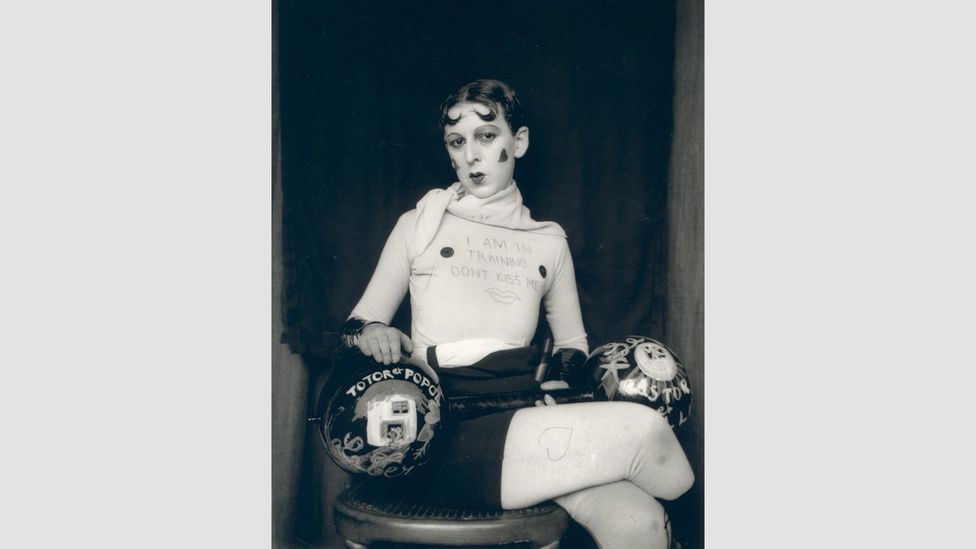Claude Cahun

Claude Cahun was a French lesbian photographer born in 1894 in Nantes, France. Cahun’s birth name given to her was Renee Mathilde Schwob, however she changed her legal name to Claude Cahun in 1917. Cahun was most recognised for her activist work repelling gender norms. She moved to Jersey in 1937 with her partner, Marcel Moore (named at birth as Suzanne Malherbe). The couple became active as resistance workers and propagandists during the German occupation of Jersey and the other Channel Islands. Cahun and Moore would attend Germany military events and placed activist leaflets in the pockets of soldiers, on chairs and even hid them in cigarette boxes for soldiers to later discover. Cahun continued to take self portraits presenting herself in non-binary characteristics until her later life, although she did not want to be famous therefore didn’t gain recognition for her photography until she died in 1954, after se and Moore had been arrested and sentenced to death in 1944 due to their activist movements. However before their death sentence, Jersey was liberated in 1945, resulting in both of their releases although Cahun later died due to being poorly treated in prison. Claude Cahun’s writings were published in 2002, as she leaves behind her iconic legacy in the non-binary and LGBTQ community.
Analysis of Claude Cahun’s work

The lighting in the image is rather soft, as it creates subtle shadows which can be seen in the face and especially under the eyes. However the juxtaposition between light and dark is still very intense. This is shown in the clothing, makeup and hair, and how they create an extreme contrast in tone against Cahun’s fair skin. The main source of light appears to be coming from behind the camera, as the face is lit quite evenly.
There is no distinct use of line in this photograph, as there is neither a repetition of line of use of leading lines, which makes the composition more complex.
Similar to the use of line, there is no representation of repetition in this image, presumably to focus on the activist message of the composition of the image.
The majority of the shapes in the image are organic and curved. The only representation of artificial shapes is the rounded weight in the hands of Cahun.
It is difficult to recognise the depth of field in this image as the background is made up of purely empty space, therefore making it difficult to compare the focal point’s focus with the background.
Although texture is not the main focus for this image, the overall texture of the image is rather smooth as the shapes in the photograph are organic and curved. There is no representation of rough or jagged edges.
There is a range of tones from dark to light in this image. The darkest sections of the photograph can be seen in the hair, clothing and makeup of Claude Cahun aswell as the background. The lightest areas are found in Cahun’s fair skin tone and the white images on the weights in Cahun’s arms. The image, overall, tends towards darkness as the entire background and elements of the foreground prioritise darker tones.
There is no colours featured in this photograph as the photo was taken in 1927, and colour photography was only made accessible in the late 1930’s. However I believe the vintage greyscale appearance of the photo adds a sense of intimidation and courage.
The composition of this photograph is very artificial and purposely set up. In the photograph, Cahun dresses as a ‘strong man’ from a circus, in order to create controversy over the stereotypical woman being weak or insignificant. This would have been a risky and revolutionary protest for both women and the LGBTQ community as these groups had been oppressed for centuries, yet Cahun celebrates her differences and sexuality.
Examples of Claude Cahun’s work



